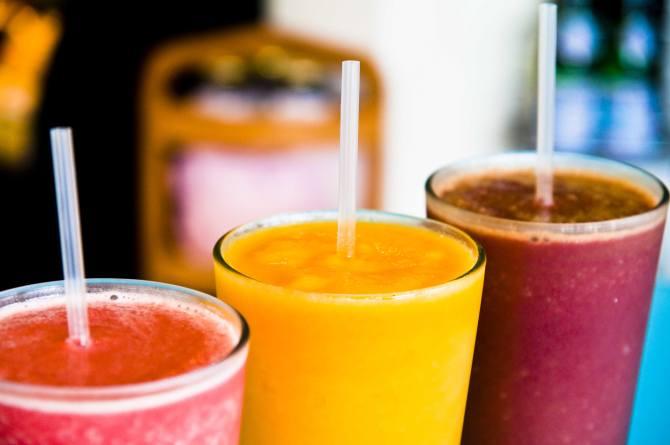Avoid these common mistakes and make a healthy smoothie.

Smoothies have been the health buzz for a long while now. They are likely to be around for some time as they are fun, effective and easy to make.
Smoothies now come packaged and are part of most eateries and health food hang-outs. They are part of many gym health bars. And part of the beach bar scene too.
Food books exclusively devoted to smoothies are the eye-ball grabbers in the health books section. You will find them in traditional eateries as well as modern funky ones.
You can turn out a healthy one for just a few rupees. Or try the high-end ones that use imported fruits.
They are great in-between snacks, or make complete meals in themselves.
Yet, Shameem Akthar, yogacharya trained in the Sivananda Yoga Vedanta Centre, warns against some common mistakes in producing that perfectly blended smoothie.
Too fibrous:A thick smoothie is fun and nice to spoon up. But if you use the wrong blender (used for cooking) you will find that your smoothie becomes too thick, like a blob of weed-soup. It tastes odd too.
For a thinner texture use juicers exclusively meant for this purpose.
Hand blenders are good for yoghurt and dips, but may not whip up a good smoothie.
Juicers will remove excess fibre and retain the essence of the fruit. And while it may mean dumping a lot of fibre, that may be good in the long run.
Too much fibre is a mistake often committed by over-enthusiastic health freaks. It can actually move the food too fast through the digestive tract, not allowing nutrients time to get absorbed.
It can cause gas and make you feel bloated. Sometimes, too much fibre can cause havoc in the large intestine, causing minor tears if the ratio of fibre is unfairly large for your system.
Too thin: Happens when you add stuff that can suddenly turn watery -- like curd. Or fruits that are watery in nature.
Or if you add water when beginning to blend. This is a trick used by hotels to give you a tall glass (with sugar and ice cubes added, to fool you even further).
So do not add water in the beginning. This will affect the texture of your blend and interfere with the blending leaving some bits thin and other parts chunky.
In a good juicer, the amount extracted will be surprisingly small. Do not add water to plump it up. Instead, serve in a smaller glass so the taste and texture is not ruined by water. A good smoothie does not need water.
Adding sugar/salt in excess: An all-vegetable smoothie may taste bland, so you often liven it up by adding sugar or salt.
This will just ruin the impact of the smoothie.
Instead, try stevia or honey. But don’t make excess use of the latter because it is calorie-dense. Rock salt is preferable if you must use salt.
The ideal way to create flavour, though, is to add sweet-tasting fruit (in harmonious ratio) or a tangy one (for a savoury taste).
If you are new to smoothie-making, it is good to scout for some all-time classic favourites (on online sites or from books) and try them out first to avoid unpleasant surprises.
Additional thickeners: Adding stuff to make the smoothie thick, so it is a good meal replacement is a great idea.
Most people add granola. But it is better to have them separate rather than together because if your cereal is not chosen wisely, it is going to add hidden sugar and additives to an otherwise healthy mixture.
Most smoothie "chefs" will recommend protein powder, soft silken tofu, or calorie-light dry fruits (soaked almonds, for instance). Adding too much dry fruit will again spike the calories in your drink and is avoidable.
Too much fruit: It is common for people to put many fruits into one drink. Actually, mixing foodstuffs correctly so as not to agitate the system is part of traditional cuisine and is often forgotten by new age health freaks.
Limit the types of fruits in your smoothie. Two or three fruit varieties in a drink is sufficient. Instead of increasing the variety, you should ensure that you get a full glass.
Also, fruits are naturally high in sugar, and in juice form the sugar is broken down for more easy absorption. This creates a sugar yo-yo, making you hungry a short while after consuming your smoothie and sabotaging your intention of making it a strong meal replacement.
So, limit the number of fruits in your smoothie. Add a tangy one to add flavour, ensure better absorption of nutrients (for instance, vitamin C, which gives the tang in fruits, facilitate iron absorption), and also control stomach acids so your hunger is controlled naturally.
Photograph: Ken Hawkins/Wikimedia Commons










